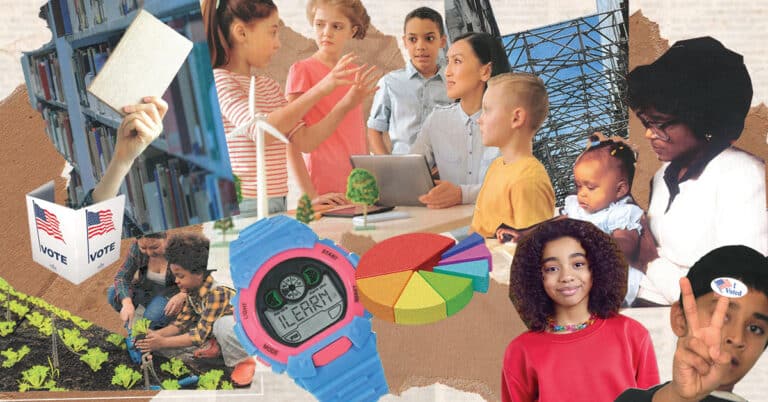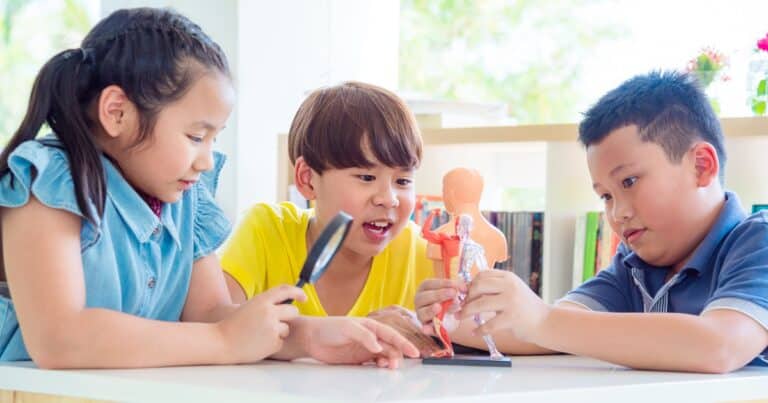In the last several months, public school stakeholders raised questions about how schools, classrooms and communities have responded and adapted to the changing health and political landscapes. Today, these questions underscore an ever-growing sense of urgency. Indeed, the ongoing demonstrations in opposition to systemic violence against Black people and the disproportionate impact of the COVID-19 pandemic have forced broader inquiries into the role of public institutions. For example: How do public institutions, particularly schools, build equity to reduce the marginalization of Black, Indigenous and students of color? What happens when schools use student-centered approaches, like culturally responsive education and mastery-based education, to address issues of equity?
“I try to ally and partner with the students because [they] see a lot that I miss and they know how to read things that I don’t have the cultural competency to know how to read…”
Our investigation into culturally responsive and mastery-based education
The culturally responsive mastery-based education research project explored how schools incorporated both culturally responsive education practices and mastery-based educational practices.
Culturally responsive education is a set of priorities and practices that engages students’ full authentic selves and increases their sociopolitical consciousness by building on cultural references to develop knowledge, skills and attitudes in the classroom.
Mastery-based education is a learning approach that centers students’ individual needs through differentiated instruction rather than numerical grades for purposes of mastering instructional content. This project was ignited by New York City educators and practitioners who recognized a need to combine culturally responsive practices into existing mastery-based structures to create better educational experiences for students of color, students with disabilities and multilingual learners.
Our study took place across eight middle and high schools and included administrators, staff, educators and students. Study participants shared their knowledge, experiences and challenges when applying both culturally responsive and mastery-based education in schools.
Early Findings of the Culturally Responsive Mastery-Based Education Investigation
Our preliminary findings suggest that educators conceptualize the relationship between culturally responsive and mastery-based education based on three levels of understanding: a limited understanding, a simplistic understanding and a dynamic understanding.
Educators’ understanding of the connection between culturally responsive and mastery-based education is critical because it influences how they view their work, how they center students, to whom they are culturally responsive and how that influences the quality of their equity work.
Limited understanding
A limited understanding of culturally responsive and mastery-based education, as indicated in the table below is characterized by the belief that culturally responsive education and mastery-based education are the same and can be used interchangeably. However, the practices are not interchangeable; teachers in this category often incorrectly conflate culturally responsive and mastery-based education because they offer students differentiated instruction. However, the differentiated instruction is rarely based on students’ cultural backgrounds and educators do not select scaffolds and supports that consider students’ cultural referents.
Simplistic understanding
A simplistic understanding of culturally responsive and mastery-based education acknowledges that these approaches are different and when integrated, can better students’ educational experiences. However, this understanding lacks cultural competence and sociopolitical consciousness and does not feature a purposeful inclusion of students’ cultural backgrounds, despite the acknowledgment that the approaches differ. This recognition of the differences between culturally responsive education and mastery-based education is not enough to provide students with the necessary tools to unpack issues of social injustice and privilege.
Dynamic level of understanding
A dynamic level of understanding acknowledges that these practices are distinct and when properly implemented, can better students’ educational experiences while investigating issues of power, privilege and identity. Educators with a dynamic level of understanding consistently implement culturally responsive and mastery-based practices in ways that are explicit about centering students’ cultures, identities and backgrounds. Properly implementing these approaches prepares students to examine how their identities are represented in their education while also readying them with the tools to critique power dynamics and social inequities beyond the classroom.
Implications and Recommendations for Bridging Culturally Responsive and Mastery-Based Education
Teachers’ varied levels of understanding are often reflected in their reported classroom practices which are influenced by their knowledge of and ability to apply culturally responsive education and mastery-based education. When teachers operate at the limited level, they can default to being culturally responsive primarily to White middle-class students which can lead to inequitable educational practices for Black students, Indigenous students, students of color, English language learners and students with disabilities. And educators operating with a limited and simplistic level of understanding may not be intentional about integrating students’ cultures, languages and abilities into the course material to better students’ educational experiences. As a result, students are left with an experience that does not speak to their individual assets or culture.
However, as educators progress to a more dynamic level, they are able to create a learning environment that centers students’ full identities—especially Black students, Indigenous students and students of color—and can provide targeted opportunities for students to make connections between content, real life experiences, social justice and the roles that privilege and oppression play in the way knowledge is constructed.
Below are a few examples from educators who shared exemplary classroom practices that reflect dynamic levels of understanding.
- Shift the teacher-student power dynamic, so that teachers and students co-create a learning environment where power doesn’t solely rest in the educators’ hands but facilitates student agency. Jackie, a high school special education teacher, discusses how a collaborative classroom environment facilitates equity by “allow[ing] students to have actual ownership over what they’re doing. It’s not just something they’re teaching me, but this is something we’re learning about and they can say why it’s important and be a little more critical about the education they’re getting.” It’s her hope that an equitable classroom takes “some of the ownership of the classroom out of my hands and other teachers’ hands and put[s] it into the hands of students.”
- Openly work through issues of oppression that affect students, while helping students act as change agents. Victoria, a high school teacher at an international school with a large multilingual population, discusses her strategy for partnering with her students. Victoria states,“I try to ally and partner with the students because [they] see a lot that I miss and they know how to read things that I don’t have the cultural competency to know how to read…I try to give students a lot of structures so [that] if we have a conflict, here’s some English to help you have that conflict.” Victoria embraces the conflict, provides students with resources to handle the conflict, acknowledges her positionality, learns from students and acts as an ally.
- Understand how teachers’ racial identities impact their classroom practices and the social context of that impact. Nina, a high school science teacher, discusses how her identity and experiences as a White woman influence her students and her classroom through this quote: “I started talking about how whiteness comes into the classroom. School is tailored to work best for White middle-class students. As a White teacher, how I [perceive] school and expectations [for students] is shaped by my identity.” Beyond simply recognizing that her identity impacts her perspectives, Nina demonstrates her understanding of the sociopolitical nature of traditional schooling and who it centers. During her interview, Nina shares that she does a lot of reading to establish a wider perspective; she reads independently and with teachers at her school.
Interested in diving deeper into the findings of this study? Explore findings related to school structures, teacher beliefs and student experiences. Learn More
A dynamic understanding of culturally responsive education and mastery-based education occurs when teachers move toward achieving educational equity by being responsive to Black student, Indigenous students and students of color and provide necessary resources to examine and interrogate social inequities and then apply their classroom experiences to real life. As educators across the country grapple with how to structure learning environments that center students’ humanities and full identities and support students to become change agents while mastering classroom content, culturally responsive and mastery-based education have emerged as important instructional tools.
Developing a dynamic understanding of culturally responsive education and mastery-based education can help educators facilitate lessons and critical conversations about the pandemic, uprisings against anti-Black violence, confrontations with White supremacy and the pervasiveness of whiteness. To meet the demands of the current social, political and educational landscape, teachers, staff members and administrators need to dive deeper into culturally responsive education and look for ways to integrate it into mastery-based approaches to teaching and learning.
Guest post by Leah Q. Peoples, Pamela D’Andrea Martinez, Lindsey Foster and Jeremy Martin of New York University’s Metropolitan Center for Research on Equity and the Transformation of Schools. They were the primary researchers in the investigation of culturally responsive and mastery-based practices in New York City schools. Funding for this research was provided by the Nellie Mae Education Foundation, the Oak Foundation and the Overdeck Family Foundation.





